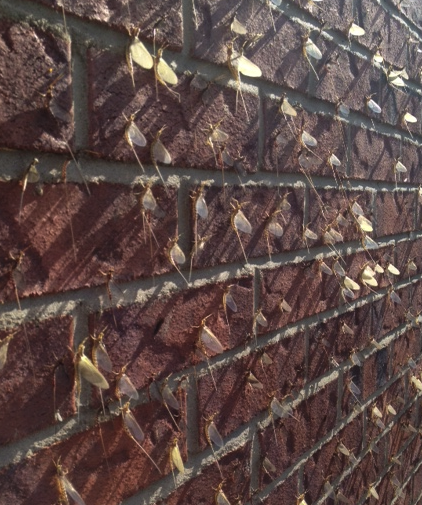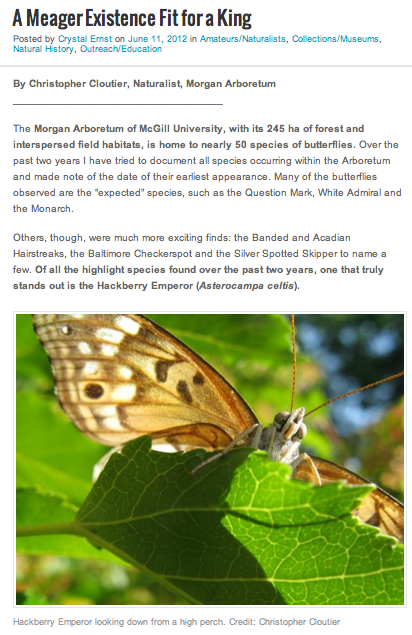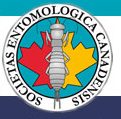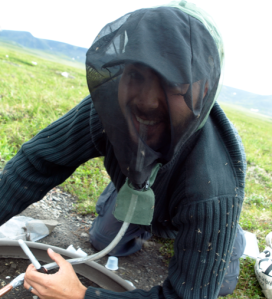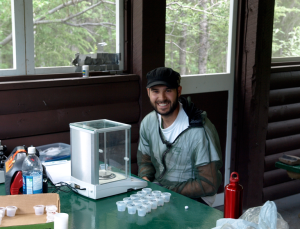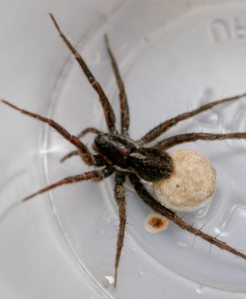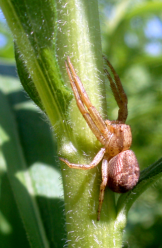
A lovely crab spider (Thomisidae).
Last week I wrote a post about the life history of Arctic wolf spiders - and in that post I discussed how some of our recent research results show wolf spider densities in Arctic tundra habitats are just under 0.5 per square metre. Morgan Jackson commented on that post, and asked about whether it was true that you are always within six feet of a spider. This is one of those common myths (along with ‘do spiders bite?).
A quick scan on the Internet suggests this myth can be stated in many ways (e.g., within a metre, within six feet, within three feet, etc.) but you get the point: are you always close to spiders? . This ‘myth’ has been submitted to Mythbusters as one that the show should tackle, and ‘yahoo answers‘ has this question - some of the answers are hilarious (e.g., not when you are swimming). So…is it fact or fiction? When in doubt, let’s go look at the scientific evidence.
What does the scientific literature tell us?
As mentioned in my post last week, our laboratory just published a paper in the Canadian Journal of Zoology about wolf spiders in the Arctic. In this work, wolf spiders occurred at densities of close to 0.5 per square meter. In some of my own earlier work in Alberta (more shameless self-promotion! see Buddle, 2000), I estimated densities of wolf spiders (in a forest environment) to be between 0.5 and 1 per square meter. Not long ago, I had a discussion with a PhD student working in Alaska, and she also had densities estimates of wolf spiders within a similar range. Kiss & Samu published a paper in 2000 that was about densities of wolf spiders in agroecosystems in Europe, and their estimates were at a minimum of three adults per square metre.
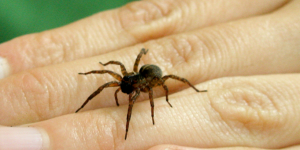
A wolf spider (Lycosidae) - they are everywhere!
Those aforementioned estimates are for one family of spiders only (the wolf spiders, Lycosidae), and wolf spiders are active and easy to see. I would argue that densities of other spider families are likely higher than wolf spiders. Most spiders are quite small and easy to miss, but they are everywhere.
In a classic and seminal paper by Turnbull (1973) (all Arachnologists should read that paper!) there are a series of estimates of spider densities in a range of habitats - and these are estimates for all spiders, not just a single family. The lowest estimate he provides is from work in a Polish meadow where densities of 0.64 spiders per square metre were reported. The highest density was 842 spiders per square metre in an English pasture. Turnbull averaged all previous published estimates and ended with a mean of 130.8 spiders per square meter. Turnbull does point that it is kind of a meaningless statistic, except that it helps us tackle the question of interest: Is there always a spider within three feet of you…?
So…. in most “natural” habitats, I think it is true that you are always within three feet of a spider.
There are some exceptions, of course. Here are some:
-spiders are not nearly as common in heavily managed, monoculture habitats (e.g., turf grass, golf courses, some urban greenspaces)
-spiders are not as common in buildings as in natural habitats (although they are there, as I’ve written about in posts about the zebra spider, cellar spider, and ceiling spider)
-in Northern climates, spiders are not active in the winter months- so although you could still be close to them (i.e, they are under the snow, somewhere…), it’s quite a different context
-spiders are terrestrial, so you are not close to spiders when you are swimming!
-on the theme of ridiculous exceptions, spiders don’t tend to be common on trains, in airplanes or in trucks and cars (although have you noticed there is often a spider tucked away in your side-view mirror?)
Spiders: you gotta love them - in natural systems, they are always close to you!
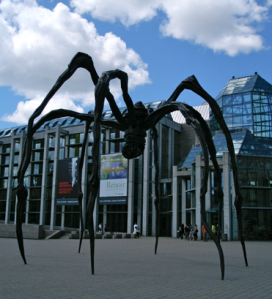
Spiders - they really are everywhere - even as sculpture.
References
Buddle, C. (2000). LIFE HISTORY OF PARDOSA MOESTA AND PARDOSA MACKENZIANA (ARANEAE, LYCOSIDAE) IN CENTRAL ALBERTA, CANADA Journal of Arachnology, 28 (3), 319-328 DOI: 10.1636/0161-8202(2000)028[0319:LHOPMA]2.0.CO;2
Kiss, B., and Samu, F (2000) Evaluation of population densities of the common wolf spider Pardosa agrestis (Araneae : Lycosidae) in Hungarian alfalfa fields using mark-recapture. European Journal of Entomology 97(2) 191-195 Link
Turnbull, A. (1973). Ecology of the True Spiders (Araneomorphae) Annual Review of Entomology, 18 (1), 305-348 DOI: 10.1146/annurev.en.18.010173.001513

